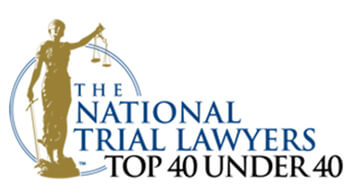Staten Island Money Laundering Lawyer

Staten Island Money Laundering Attorney
Money laundering is a type of white-collar crime that is commonly seen in New York. Because it is a serious charge that often involves large, illegally obtained amounts of money, these kinds of cases are handled by the U.S. Department of Treasury. This makes having an expert white-collar crime attorney on your side absolutely imperative if you are facing a money laundering charge here in Staten Island.
Luckily, here at The Vitaliano Law Firm, we have been working tirelessly for years to represent both businesses and individuals facing white-collar crime charges across New York. We know how intimidating a potential criminal charge can be, especially when it involves the U.S. Treasury. That is why we offer multiple expert legal services as well as advice for each of our clients who seek our help. With experience in both business and criminal law, we are prepared to find a solution for your case, too.
What Is Money Laundering?
Money laundering is the act of concealing, transferring, or receiving money that was obtained through illegal activities. When individuals or businesses launder money, they hide what is known as “dirty money,” or illegally obtained money. They then disguise it as “clean money,” or money that was legally received by a business. There are multiple different forms of money laundering. Some of the most common are:
Layering
Layering is a commonly used money laundering scheme where an individual or business slowly moves money through a multitude of different transactions and transfers. This way, massive amounts of money are not being transferred and catching the eye of the government. The ultimate goal of layering is to eventually distance the dirty money from its origins and have it appear legitimate.
Bank Laundering
When an individual or business owns their own financial institution, it can be relatively easy to “clean” money that was obtained through illegal measures. Transactions from one financial institution to another in a foreign country often involve currency exchange. It can be hard for the Treasury Department to see a money laundering scheme within the transfer.
Real Estate Laundering
Real estate purchases are some of the only transactions that allow for large amounts of cash. Therefore, many money laundering schemes involve using dirty money to purchase a piece of real estate. Instead of keeping the property that was purchased, though, it is immediately sold so that the buyer can receive clean money for it.
Cash Business Laundering
Cash businesses are often subject to money laundering schemes because large amounts of cash go in and out of their establishments consistently. In addition to the money, many cash businesses like car washes, strip clubs, and laundromats can easily be created as fronts. Because cash is constantly moving through these businesses, it can be hard to flag when a transaction is using dirty money.
Why You Need a Money Laundering Attorney
Facing any kind of criminal charge as a business or an individual in New York can be unnerving. That is why it is critical to find a white-collar crime attorney who has experience with these kinds of cases. By working with an expert lawyer, you can trust that your best interests will be fought for. Our team can help you understand the circumstances of your case and the legal aspects surrounding it. We can also give you advice on what steps to take next. We can also work to evaluate the prosecution’s evidence. Our firm can help you gather evidence so that we can form a defense that best represents you. When facing criminal charges like money laundering, having a trusted attorney can make all the difference in your case.
Money Laundering FAQs
Q: What Are the Legal Consequences for Money Laundering charges in New York?
A: If you are convicted of money laundering in New York, you can be sentenced to up to 25 years in prison. You will also face fines that can be up to two times the dollar amount that was involved in your laundering scheme. You may also have to contend with civil claims to recover damages from your activities.
Q: What Amount of Money Is Considered Money Laundering?
A: In most cases, the government is more worried about the intent of laundering than the amount. Any amount of money that was involved in the scheme is still considered money laundering. However, the larger the amount, the more serious the case will be taken. Most money laundering cases involve amounts in the hundreds of thousands.
Q: How Do You Prove Money Laundering?
A: The prosecution most often uses circumstantial evidence to piece together and prove a money laundering scheme. However, this can be difficult if there is not sufficient evidence to show that a scheme existed. The prosecution can use evidence that includes, among others:
- Bank statements
- Real estate transactions
- Business trips
- Eyewitness testimony
Q: What Are the Three Stages of Money Laundering?
A: The three primary stages of a money laundering scheme include placement, layering, and integration. The first step, known as placement, involves the initial placement of dirty money into some form of financial institution, business, or asset. Layering is then used to move the money around, most often to foreign financial institutions, so that the funds are difficult to track. The scheme ends with integration, where the individual in charge of the scheme begins to receive their money back “legally.”
Q: What Is a White Collar-Crime?
A: The phrase “white collar crime” is used to describe financial crimes that are not violent in nature. Instead, they are motivated by corporate and financial gain. Examples of white-collar crimes include money laundering, embezzlement, and fraud. These crimes are extremely detailed, and professional representation is required to defend against any accusations of committing them.
Expert White Collar-Crime Defense in Staten Island
At The Vitaliano Law Firm, our team is devoted to providing judgment-free, thorough legal representation for each client. We can take the time to listen to your side of the story and work to find the best possible solution for your situation. When dealing with money laundering accusations, working with our firm can give you a fighting chance against the charges you face. To learn more about the legal services our firm offers or to schedule a consultation, contact us today.
Testimonials






